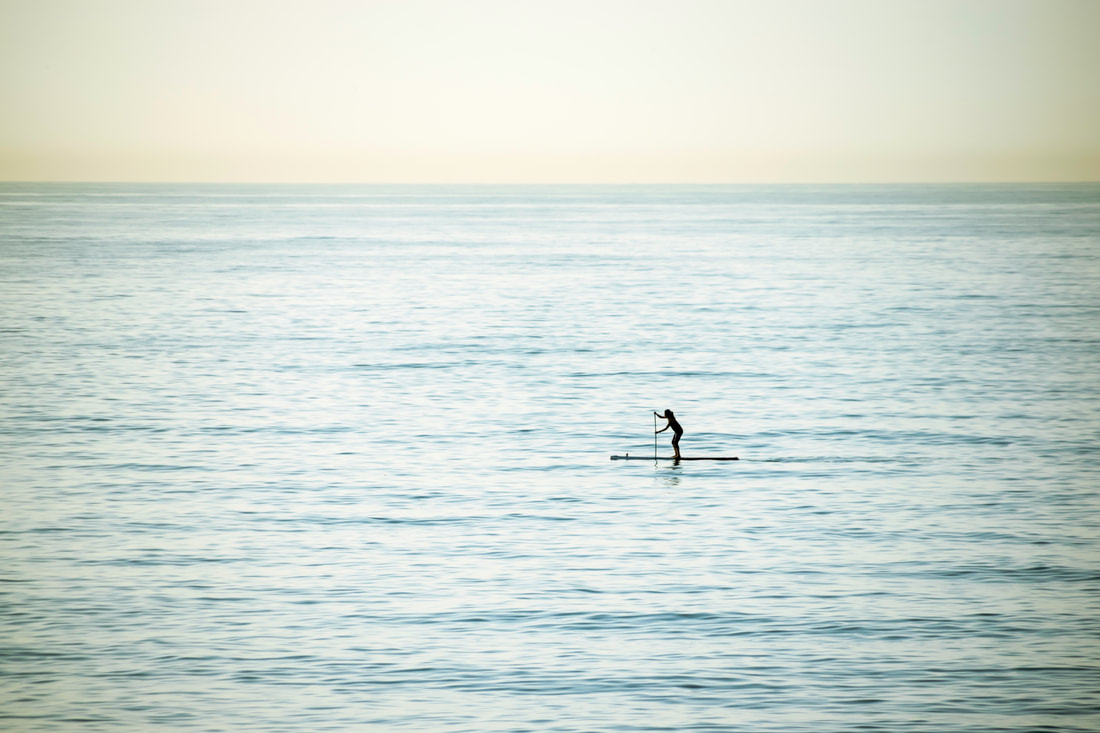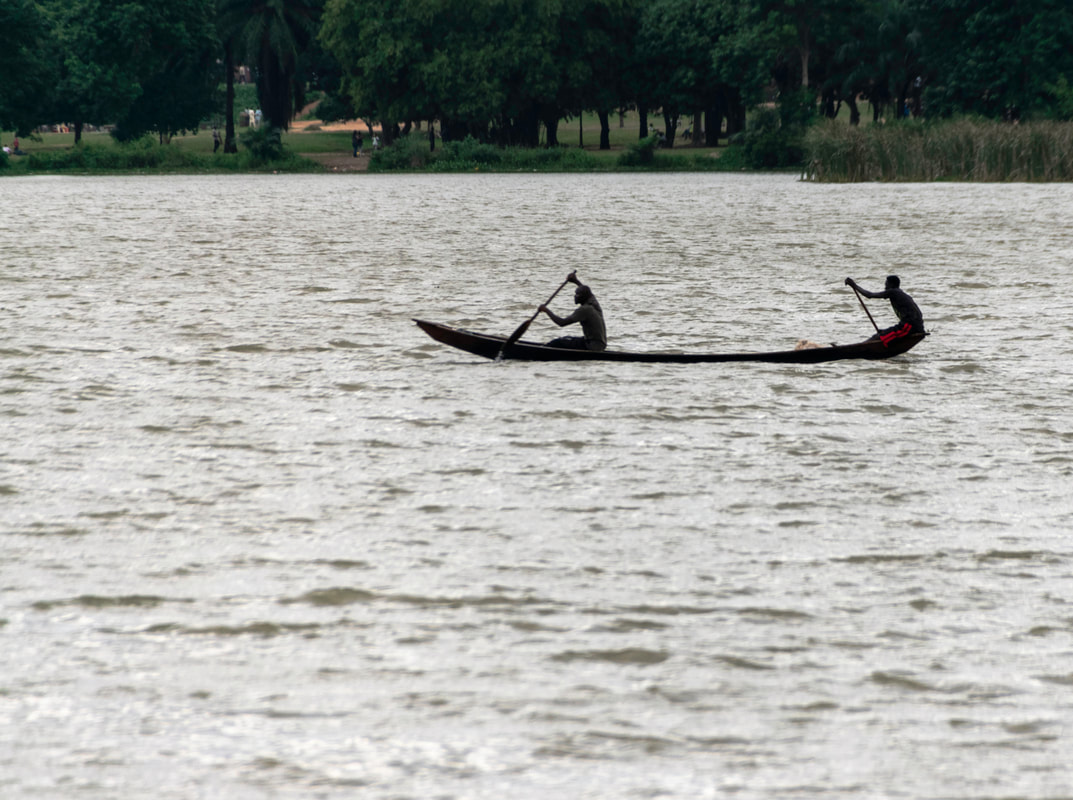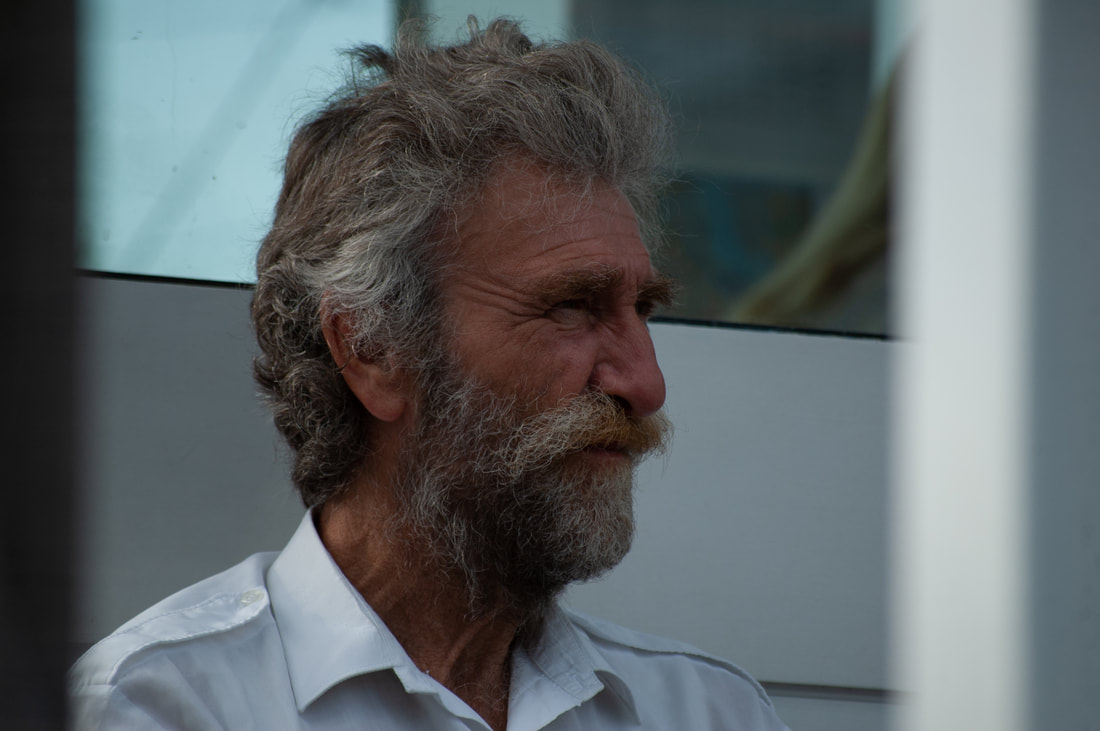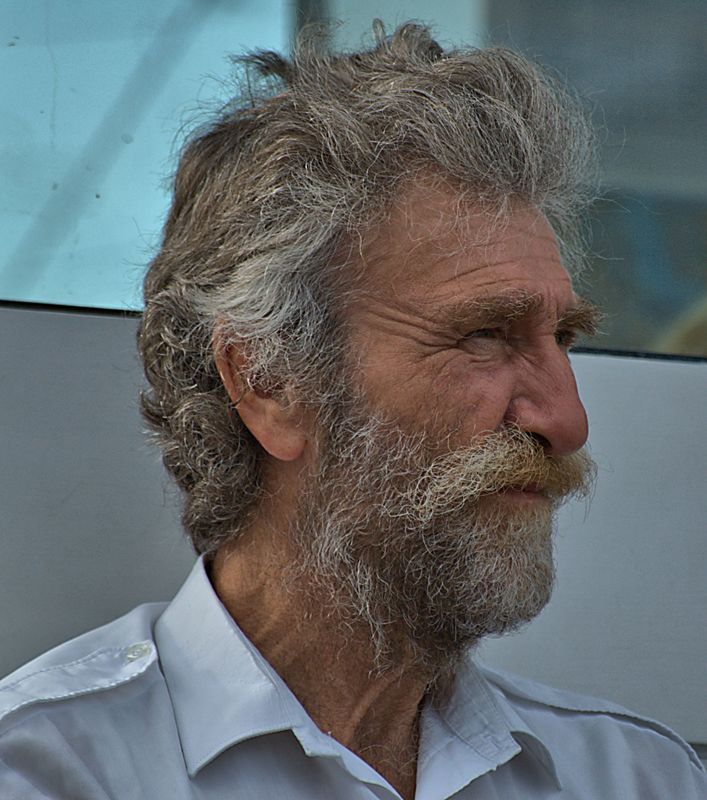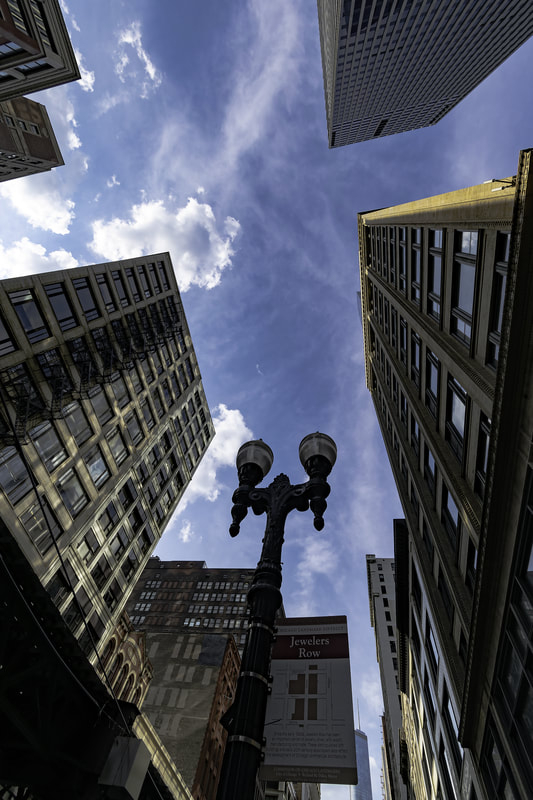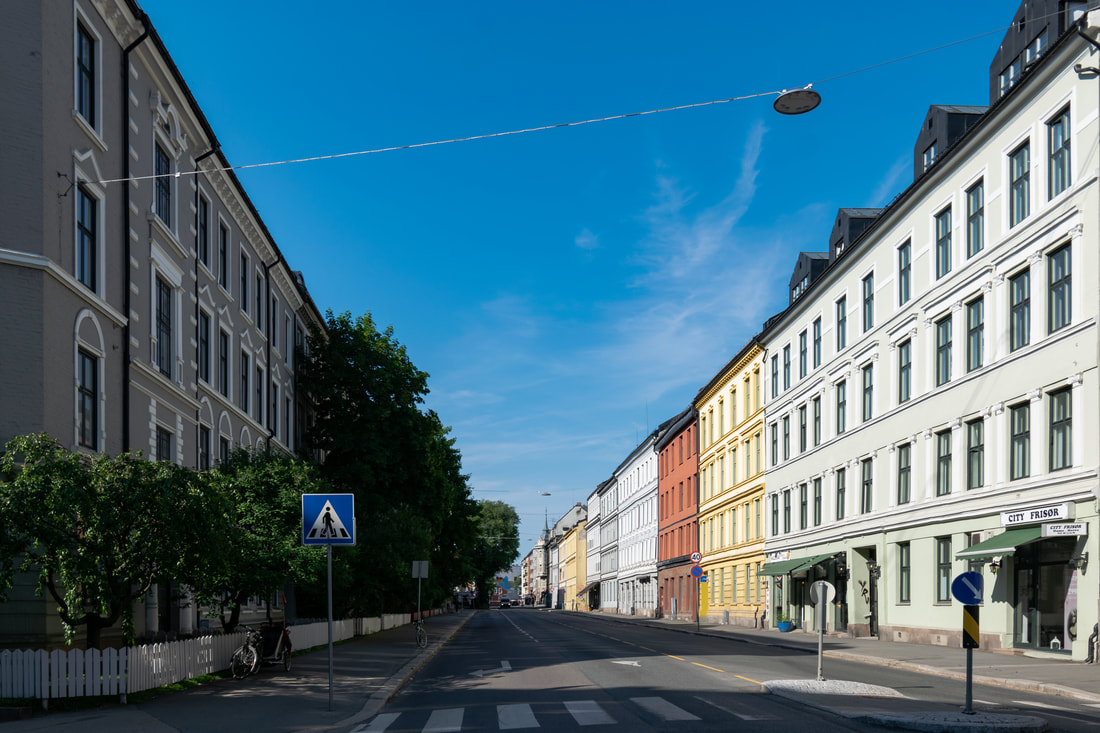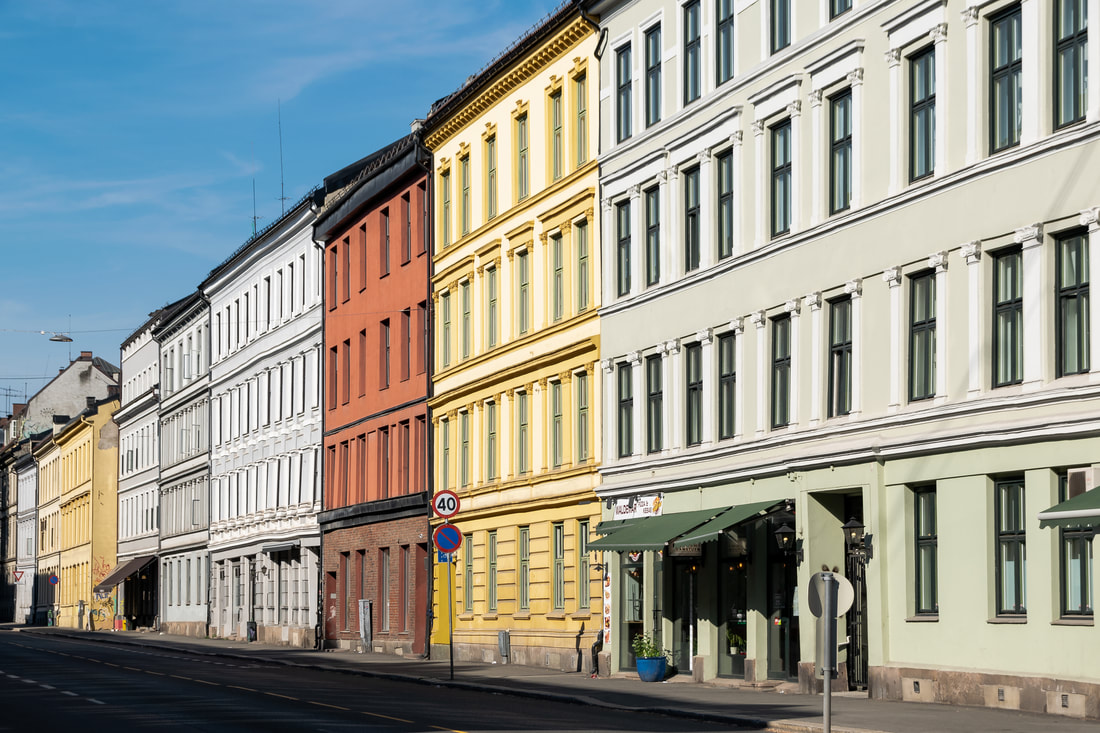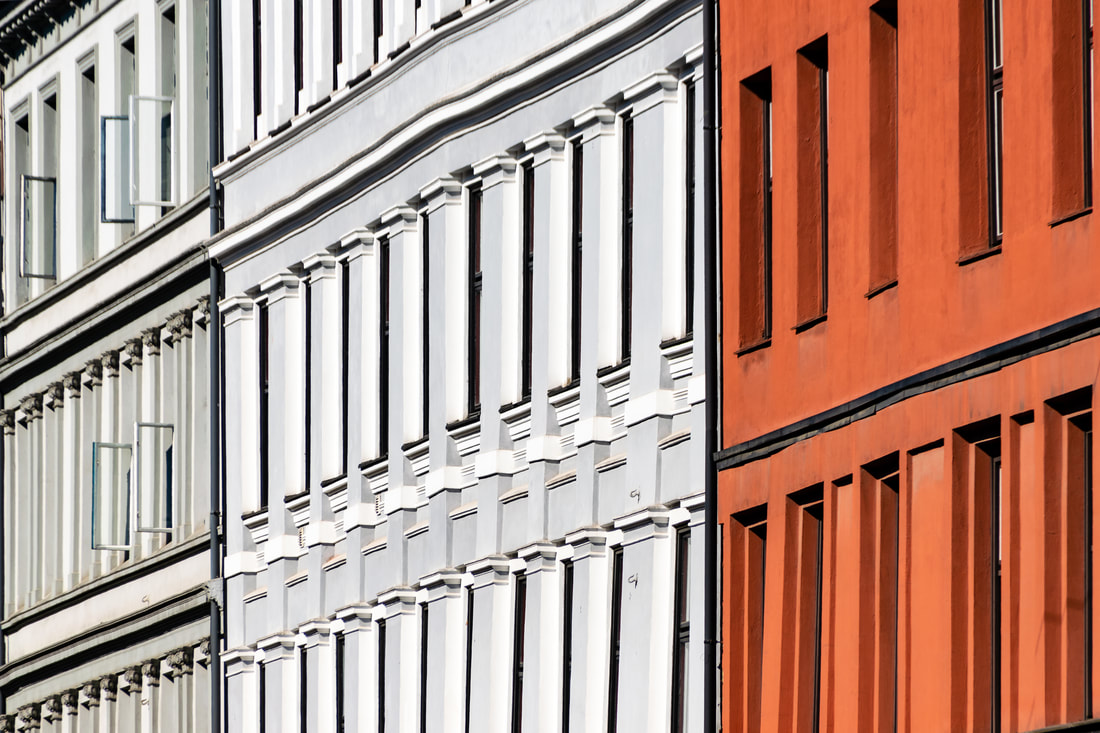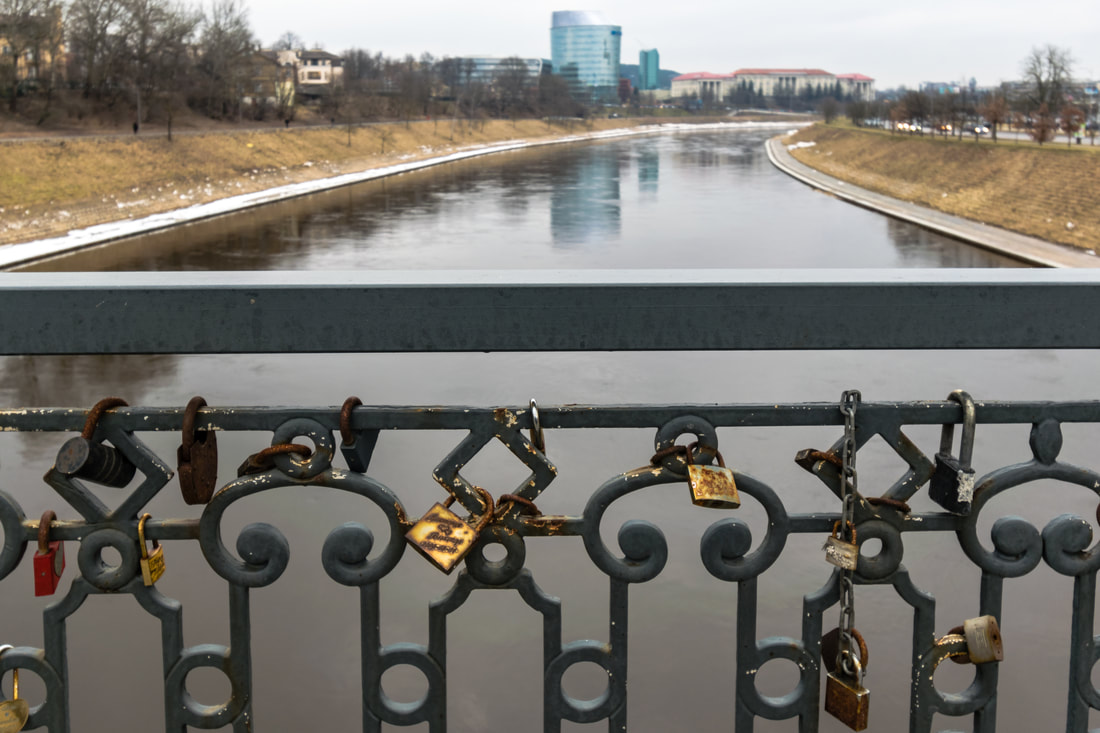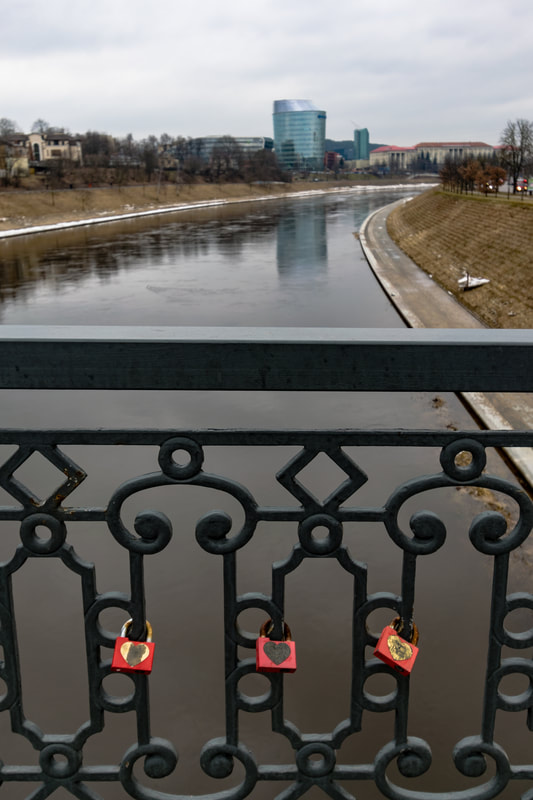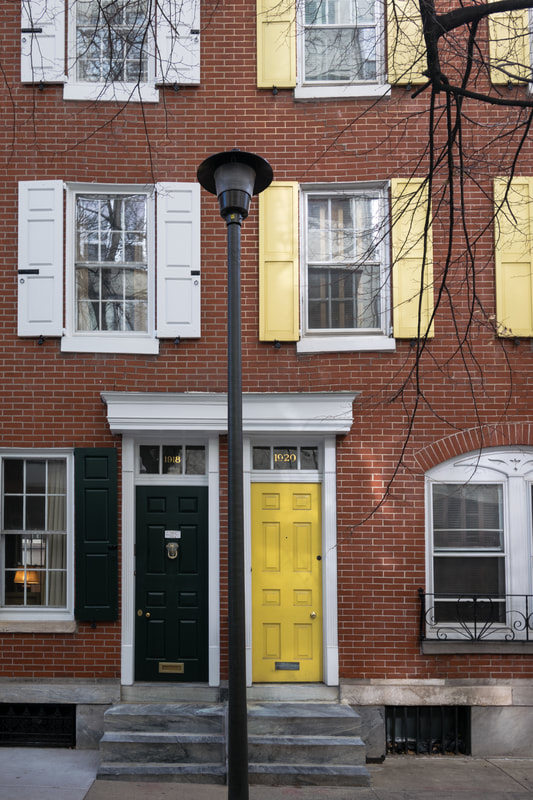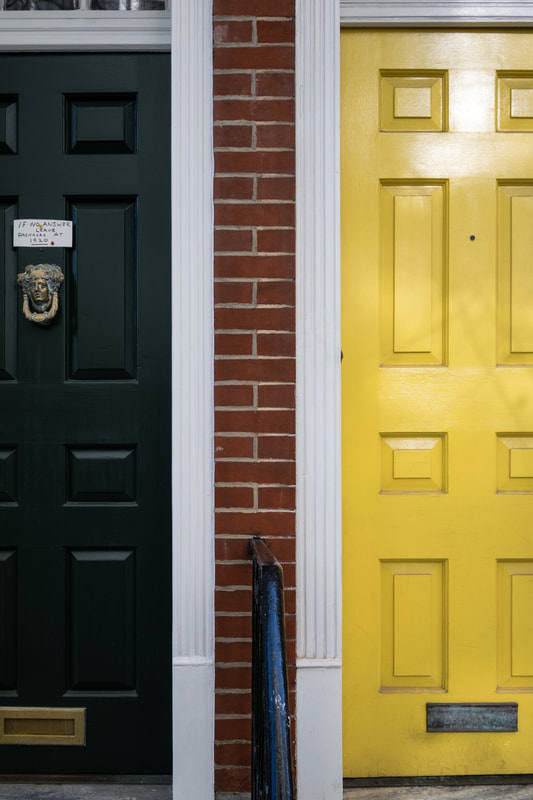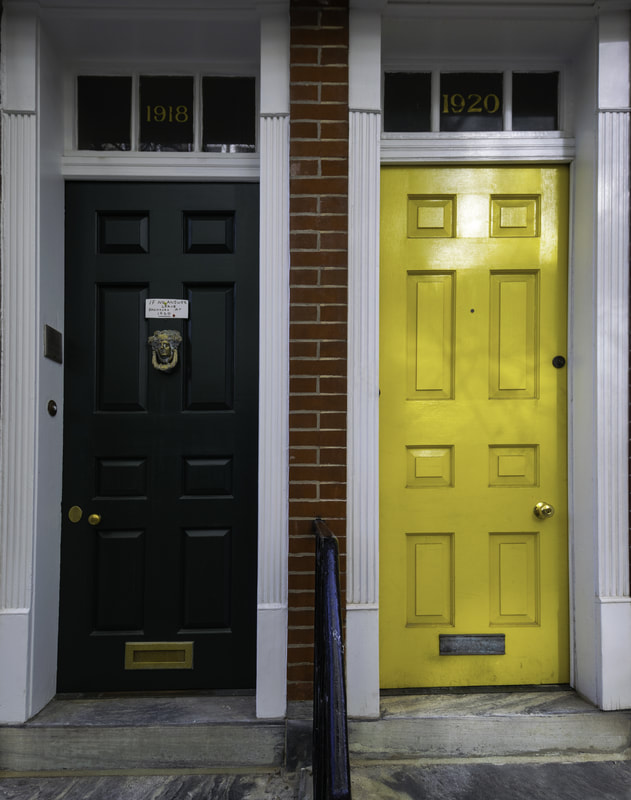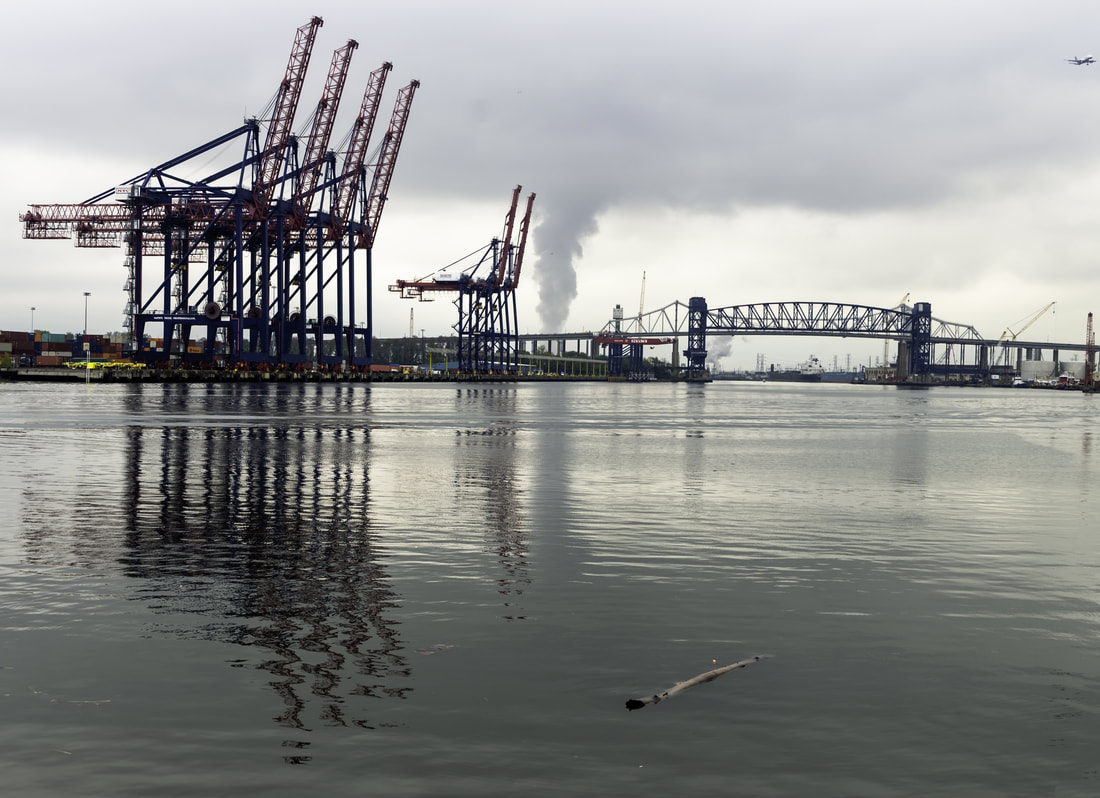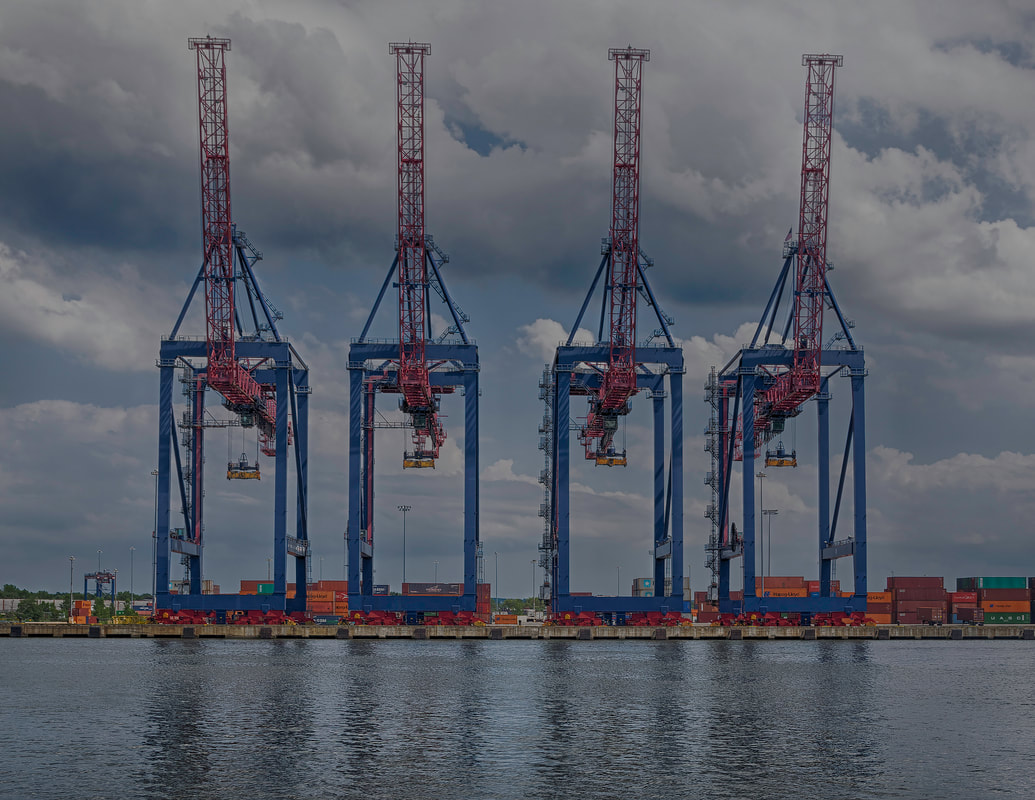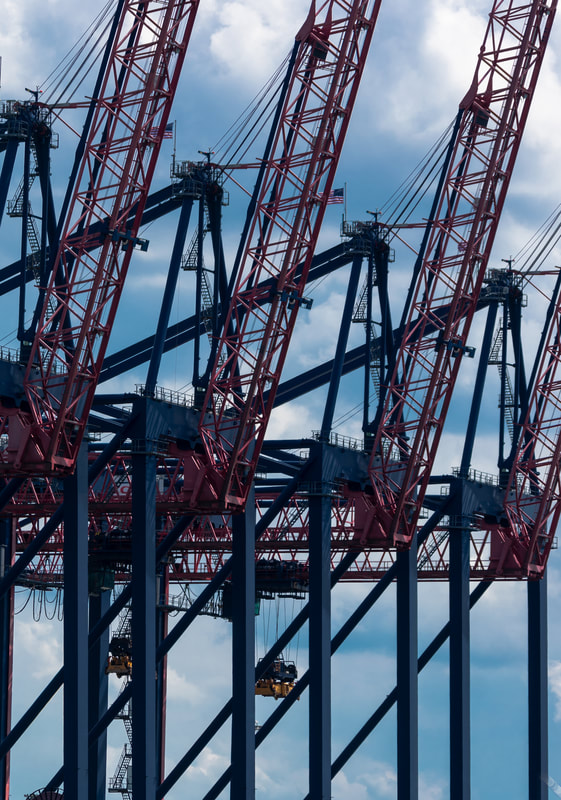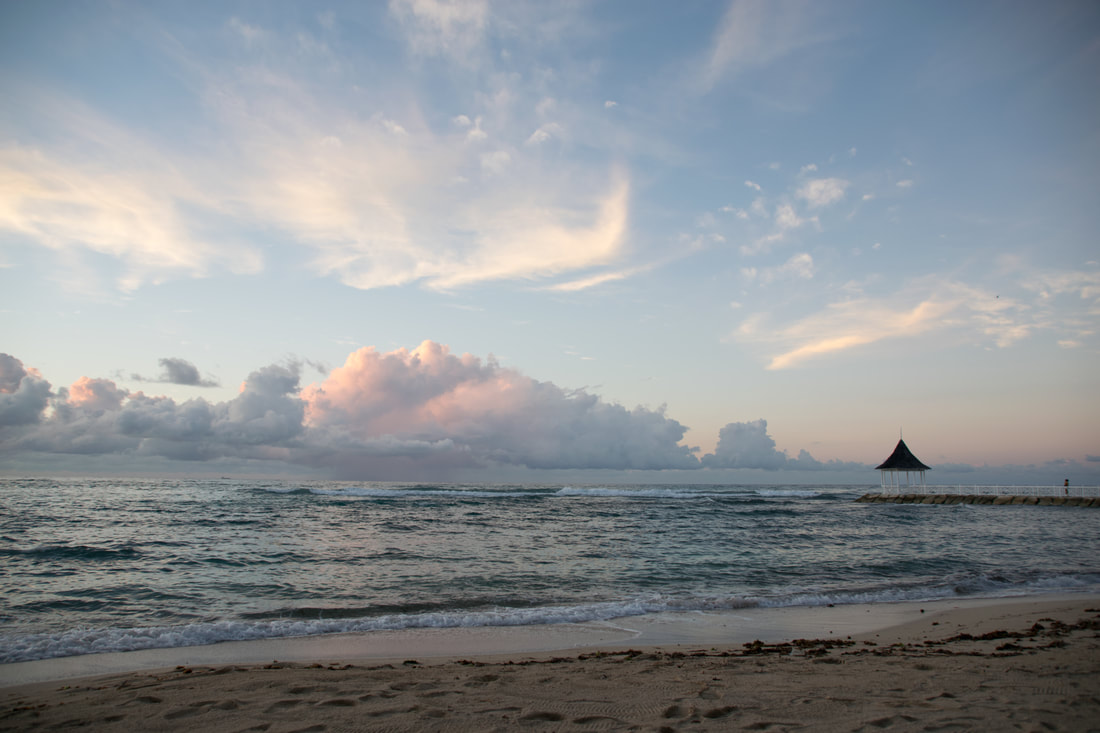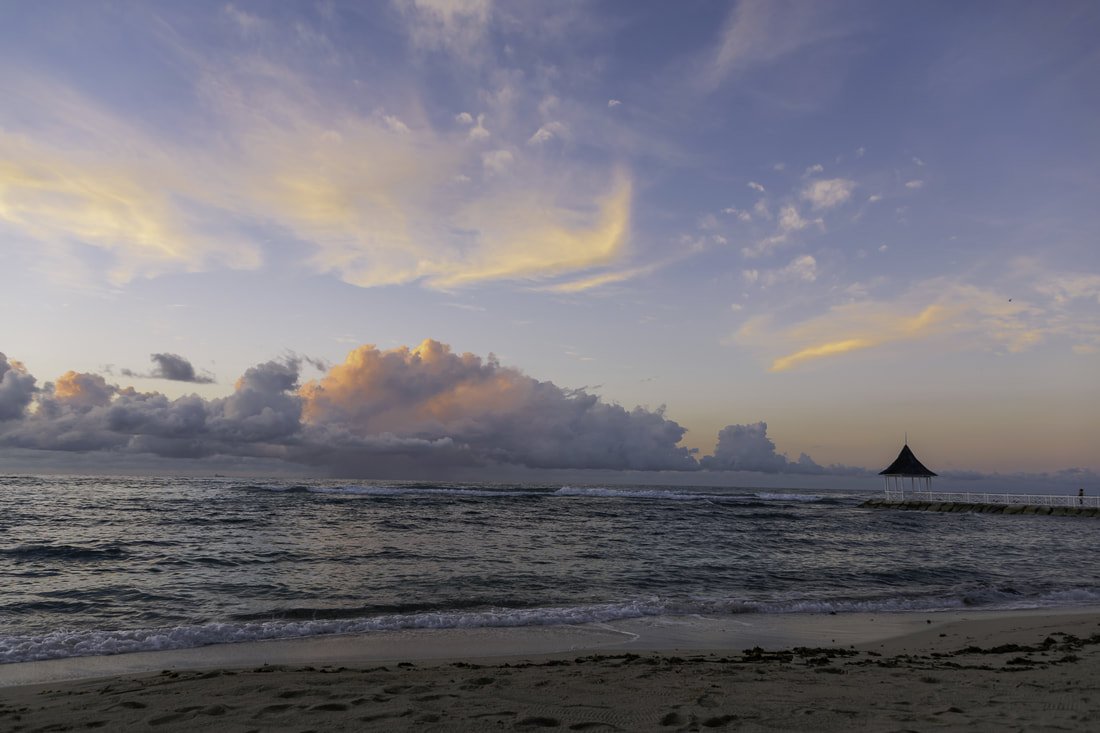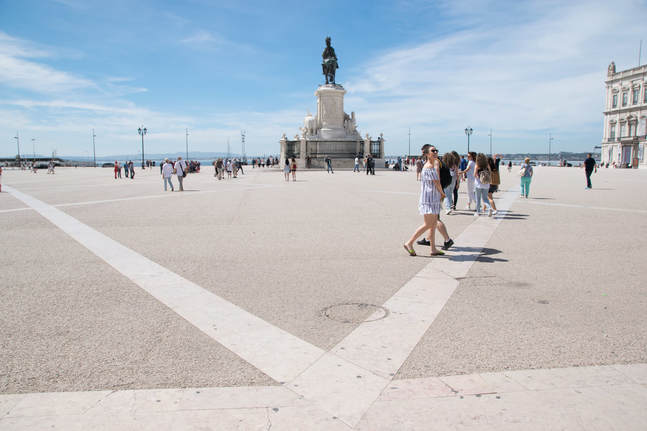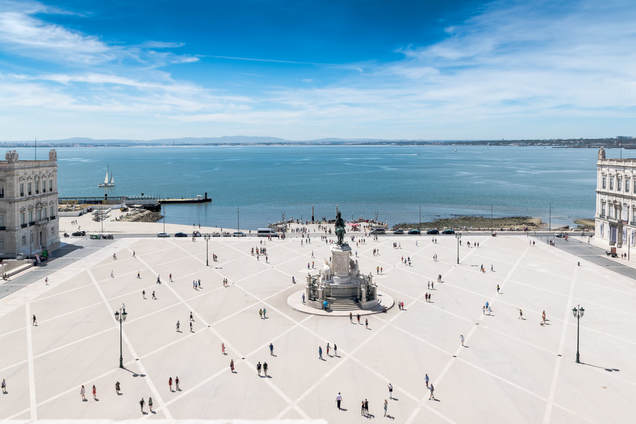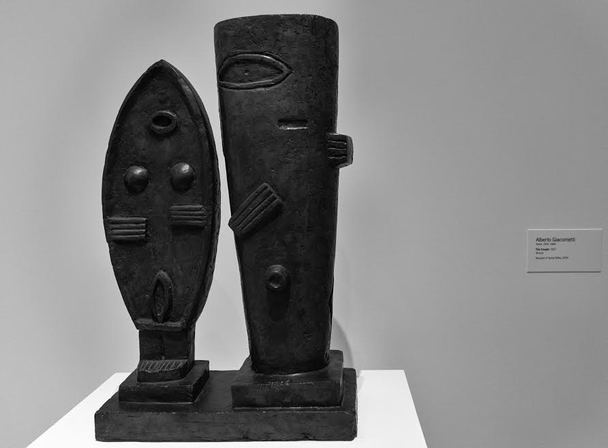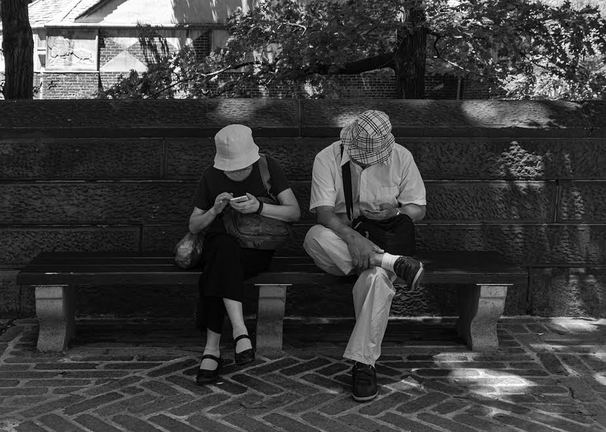Sometimes, though, the shot works better as a silhouette or with barely noticeable detail. This is because too much information can be distracting. If we want impact, the impact of a small outlined figure against an essentially uniform expanse provides the pop. In this way, the image can succeed as a minimalist images in which a particular detail is set against an uncomplicated background.
Here is an example from Barcelona, of a woman on a paddleboard.
Another example is from Abuja, Nigeria, of two men padding on a lake, where I also put them off center. However, there is not the sense of isolation here, and the silhouette is not perfect. There is color visible on one of them. While I liked this image because of the sense of purpose and camaraderie demonstrated by the two paddlers, it doesn’t work in the same minimalist way as the Barcelona photo.
If you are going to do a silhouette, consider it as part of a minimalist exercise, so the viewer focuses essentially on just two elements—the silhouetted figure and the background.
